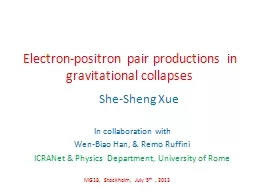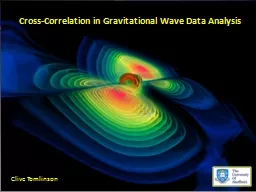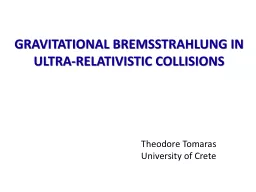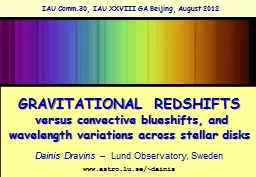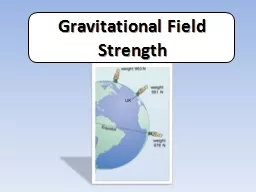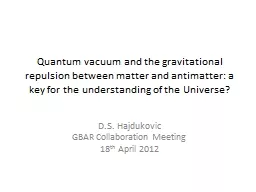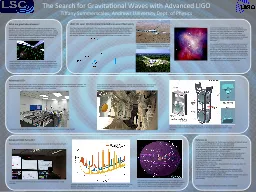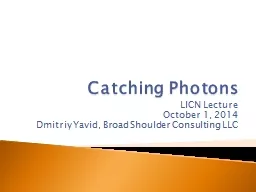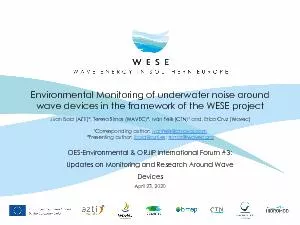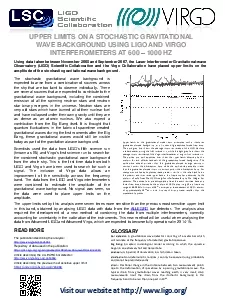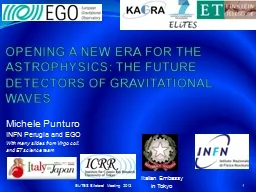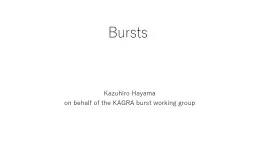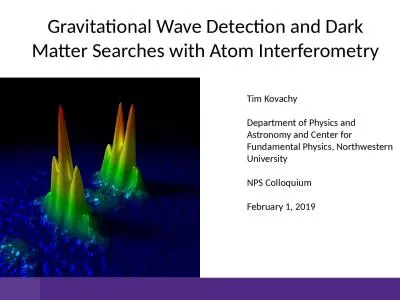PPT-Regression of environmental noise in gravitational-wave detectors.
Author : relievinglexus | Published Date : 2020-08-03
Sergey Klimenko University of Florida In collaboration with VTewari VNecula GVedovato MDrago GProdi GMitselmakher VRe IYakushin VFrolov Environmental
Presentation Embed Code
Download Presentation
Download Presentation The PPT/PDF document "Regression of environmental noise in gra..." is the property of its rightful owner. Permission is granted to download and print the materials on this website for personal, non-commercial use only, and to display it on your personal computer provided you do not modify the materials and that you retain all copyright notices contained in the materials. By downloading content from our website, you accept the terms of this agreement.
Regression of environmental noise in gravitational-wave detectors.: Transcript
Download Rules Of Document
"Regression of environmental noise in gravitational-wave detectors."The content belongs to its owner. You may download and print it for personal use, without modification, and keep all copyright notices. By downloading, you agree to these terms.
Related Documents


